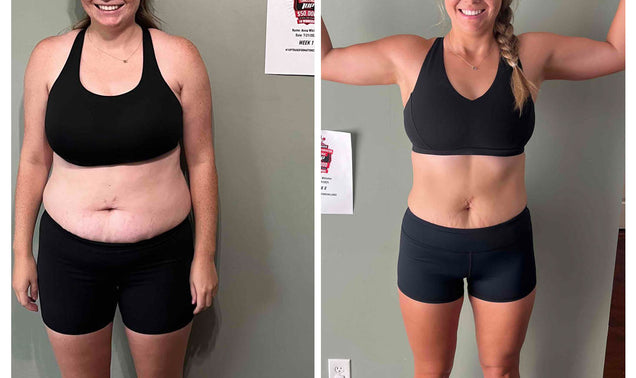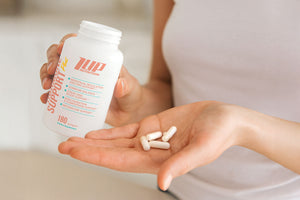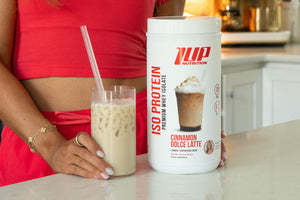Let’s face it, we’ve all had one of “those days” and you just need to cut loose, relax, and have a drink to help wash the stresses of the day away.
And, even if you do live a relatively stress-free life, sometimes it’s fun to just cut loose with your friends, have a night on the town, and enjoy a couple of “adult beverages”.
But, it’s important to remember that alcohol does contain calories, as do the mixers usually included in those neon-colored mixed drinks you enjoy so much.
However, a lot of people aren’t sure how they should count their calories from alcohol when tracking their macros.
Don’t worry, we’ve got you covered!
Let’s discuss…
How to Count Calories from Alcohol
Typically when we discuss macro tracking, we’re focused on the three main ones -- protein, carbohydrates, and fat. But, truth be told, there is a fourth macronutrient that is left off most calorie counting and macro tracking apps -- alcohol.
Alcohol is a rather energy-dense macronutrient, but not quite as dense as fat.
Here’s the total energy load of each macronutrient:
- 1 gram of carbohydrate = 4 calories
- 1 gram of protein = 4 calories
- 1 gram of pure alcohol = 7 calories
- 1 gram of fat = 9 calories
Now, since the vast majority of nutrition tracking apps do not account for alcohol, we’ll need to figure a couple “work around” strategies, because remember, the calories from alcohol do count towards your total daily calorie intake, and ultimately will impact your body composition.
The question then becomes “how” do we keep track of the calories from alcohol, if there’s not a “alcohol” macro category in our handy tracking apps?
Fats, Carbs, or Both?
Protein is the most important macronutrient when pursuing a body transformation and looking to lose fat and build muscle. As such, when you drink you need to make sure you’re consuming enough protein each day, which means we’re not going to count alcohol as a protein in our tracking.
That means we need to either count the calories from alcohol towards either carbohydrates, fat, or a mixture of both.
Now, since most cocktails are loaded with simple sugars, you may just want to count them all as carbohydrates, and this would be perfectly fine.
And while we’re on the topic, if you’re looking to minimize the amount of caloric damage your night of indulgence induces, you’ll want to stick to either straight up liquor (or on the rocks) or use a calorie-free mixer such as a diet soda.
To count your alcohol as a carbohydrate, simply take the total number of calories in your drink and divide by four (since each gram of carbohydrate has 4 calories).
So for example, let’s say your drink of choice was a glass of red wine and the bartender gives a “standard” wine pour of 5 ounces.
To count your glass of red wine as all carbohydrates, divide the total calorie content of your 5 oz glass of red wine (132 calories) by 4.
Total carbs from red wine = 132 / 4 = 33 grams
Now, if you want to count your alcoholic beverage as fat, simply take the total calorie content of your drink and divide it by 9.
Again, we’ll use a 5-ounce glass of red wine as our example.
Total fat grams from red wine = 132 / 9 = 14.66 grams
So, in your tracking app, you would input 15 grams of fat towards your daily total intake.
If you want to split the difference between the two (carbs and fats), you’ll have to do a bit extra math.
For example, let’s say you order a mixed drink like a strawberry mango margarita and it contains 300 calories.
To count it as both carbohydrates and fats, split the total calories in half and then figure out the total carb and fat impact of each half.
Here’s how it would look:
Total calories in drink = 300
Total carbohydrates from drink = 150 / 4 = 37.5 grams of carb (round up to 38g)
Total fats from mixed drink = 150 / 9 = 16.66 grams of fat (round up to 17g)
So, if you got a mixed drink that was a total of 300 calories and wanted to split it evenly between your allotted carb and fat macros, you would input 38g of carbohydrates and 17g of fat in your tracking app.
Calorie Counts for Common Alcohols
Now, what happens if you’re out on the town and there are no calorie counts listed for the drinks you’re ordering?
How are you supposed to enter the macros into your tracker?
We’ve got you covered there as well with this guide that shows estimates for the total calorie contents of the most common drinks[1].
*Note: Standard pour for wine is 5 ounces, standard pour for a shot of liquor is 1.5 oz.
|
Alcoholic Drink |
Amount |
Estimated Calories |
|
LIQUOR |
||
|
Tequila (80 proof) |
1.5 oz (45ml) |
96 |
|
Gin (80 proof) |
1.5 oz (45 ml) |
97 |
|
Whiskey (80 proof) |
1.5 oz (45 ml) |
97 |
|
Vodka (80 proof) |
1.5 oz (45 ml) |
97 |
|
Gin (94 proof) |
1.5 oz (45 ml) |
116 |
|
Rum (94 proof) |
1.5 oz (45 ml) |
116 |
|
Vodka (94 proof) |
1.5 oz (45 ml) |
116 |
|
Whiskey (94 proof) |
1.5 oz (45 ml) |
116 |
|
Rum (80 proof) |
1.5 oz (45 ml) |
197 |
|
BEER |
||
|
Beer (light) |
12 oz (355 ml) |
103 |
|
Beer (regular) |
12 oz (355 ml) |
153 |
|
Craft beer |
12 oz (355 ml) |
170 to 350 |
|
MIXED DRINKS |
||
|
Rum and Diet Coke |
8 oz (235 ml) |
100 |
|
Bloody Mary |
4.6 oz (136 ml) |
120 |
|
Cosmopolitan |
2.75 oz (81 ml) |
146 |
|
Margarita |
4 oz (120 ml) |
168 |
|
Rum and Coke |
8 oz (235 ml) |
185 |
|
Whiskey sour |
3 oz (89 ml) |
125 |
|
WINE |
||
|
Cabernet Sauvignon |
5 oz (145 ml) |
122 |
|
White table wine |
5 oz (145 ml) |
128 |
|
Chardonnay |
5 oz (145 ml) |
128 |
|
Red table wine |
5 oz (145 ml) |
125 |
A Word on Alcohol, Body Composition, and Performance
As we mentioned above, your body places priority on metabolizing alcohol.
The reason for this is that the body has no means by which it can store alcohol. Therefore, it puts a pause on digesting any other nutrients in your system and prioritizes metabolizing and excreting the alcohol.
As such, it’s important to realize that drinking too much too often can wreak havoc with your physique and stunt your body transformation, and not just because alcohol has calories. As we just stated, when you consume alcohol (any kind), your body focuses on processing that first and foremost, which means it temporarily stops burning fat.
But that’s not all, consuming alcohol can also lead to dehydration, which impairs workout performance, focus, and recovery, and it also has been shown to decrease rates of muscle protein synthesis following exercise, even when that alcohol is co-ingested with whey protein.[1]
This makes for a triple whammy that impairs recovery and subsequent workout performance as well as your ability to grow new muscle.
Therefore, when you drink, make sure to do so in moderation (1-2 drinks) and make sure to consume enough water and dietary protein each day to protect lean muscle tissue and maintain hydration.
Alcohol doesn’t have to be excluded from a healthy lifestyle, but (like most things) it needs to be used with moderation.
References
- "Calorie Count - Alcoholic Beverages." MedlinePlus - Health Information from the National Library of Medicine, medlineplus.gov/ency/patientinstructions/000886.htm.
- Parr EB, Camera DM, Areta JL, et al. Alcohol ingestion impairs maximal post-exercise rates of myofibrillar protein synthesis following a single bout of concurrent training. PLoS One. 2014;9(2):e88384. Published 2014 Feb 12. doi:10.1371/journal.pone.0088384
- Hong-Brown, L. Q., Frost, R. A., & Lang, C. H. (2001). Alcohol impairs protein synthesis and degradation in cultured skeletal muscle cells. Alcoholism, Clinical and Experimental Research, 25(9), 1373–1382.






